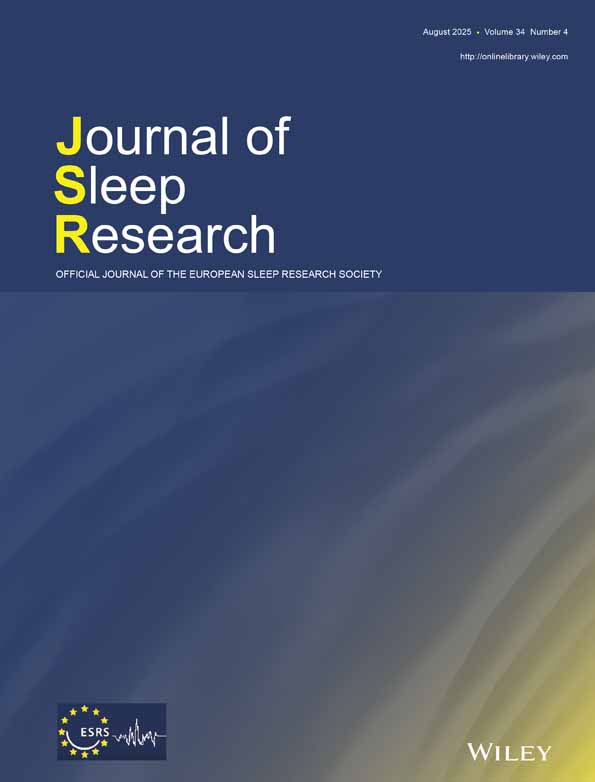Seasonal Daylight Saving Time in UK: A long-standing, successful record with few reasons to change
Corresponding Author
José María Martín-Olalla
Facultad de Física, Departamento de Física de la Materia Condensada, Universidad de Sevilla, Sevilla, Spain
Correspondence
José María Martín-Olalla, Facultad de Física, Departamento de Física de la Materia Condensada, Universidad de Sevilla, Sevilla, Spain.
Email: [email protected]
Contribution: Conceptualization, Writing - original draft, Methodology, Writing - review & editing
Search for more papers by this authorJorge Mira
Facultade de Física, Departamento de Física Aplicada and iMATUS, Universidade de Santiago de Compostela, Santiago de Compostela, Spain
Contribution: Conceptualization, Writing - review & editing, Methodology, Writing - original draft
Search for more papers by this authorCorresponding Author
José María Martín-Olalla
Facultad de Física, Departamento de Física de la Materia Condensada, Universidad de Sevilla, Sevilla, Spain
Correspondence
José María Martín-Olalla, Facultad de Física, Departamento de Física de la Materia Condensada, Universidad de Sevilla, Sevilla, Spain.
Email: [email protected]
Contribution: Conceptualization, Writing - original draft, Methodology, Writing - review & editing
Search for more papers by this authorJorge Mira
Facultade de Física, Departamento de Física Aplicada and iMATUS, Universidade de Santiago de Compostela, Santiago de Compostela, Spain
Contribution: Conceptualization, Writing - review & editing, Methodology, Writing - original draft
Search for more papers by this authorA letter response to the British Sleep Society position statement endorsing permanent winter time in the UK. We review human activity in the UK and the continued record of clocks regulations in this country since 1916.
Open Research
DATA AVAILABILITY STATEMENT
Data sharing is not applicable to this article as no new data were created or analyzed in this study.
REFERENCES
- Crawford, M. R., Winnebeck, E. C., von, M., Gardani, M., Miller, M. A., Revell, V., Hare, A., Horton, C., Durrant, S., & Steier, J. (2025). The British Sleep Society position statement on Daylight Saving Time in the UK. Journal of Sleep Research, 34(3), e14352. https://doi.org/10.1111/JSR.14352
- Eurostat. (2010). Harmonised European Time Use Surveys (Hetus). rounds 1 and 2. Retrieved from https://ec.europa.eu/eurostat/web/time-use-surveys
- Fritz, J., VoPham, T., Wright, K. P., & Vetter, C. (2020). A chronobiological evaluation of the acute effects of daylight saving time on traffic accident risk. Current Biology, 30, 729–735. https://doi.org/10.1016/j.cub.2019.12.045
- Honma, K. I., Honma, S., Kohsaka, M., & Fukuda, N. (1992). Seasonal variation in the human circadian rhythm: Dissociation between sleep and temperature rhythm. American Journal of Physiology - Regulatory Integrative and Comparative Physiology, 262, R885–R891. https://doi.org/10.1152/ajpregu.1992.262.5.r885
- Hudson, G. V. (1898). On seasonal time. Transactions and Proceedings of the New Zealand Royal Society, 31, 577–598. Retrieved from https://paperspast.natlib.govt.nz/periodicals/TPRSNZ1898-31.2.6.1.58
- Janszky, I., & Ljung, R. (2008). Shifts to and from daylight saving time and incidence of myocardial infarction. New England Journal of Medicine, 359, 1966–1968. https://doi.org/10.1056/NEJMC0807104
- Malow, B. A. (2022). It is time to abolish the clock change and adopt permanent standard time in the United States: A Sleep Research Society position statement. Sleep, 45, zsac236. https://doi.org/10.1093/sleep/zsac236
- Martín-Olalla, J. M. (2019). The long term impact of daylight saving time regulations in daily life at several circles of latitude. Scientific Reports, 9, 18466. https://doi.org/10.1038/s41598-019-54990-6
- Martín-Olalla, J. M. (2020). Scandinavian bed and rise times in the age of enlightenment and in the 21st century show similarity, helped by daylight saving time. Journal of Sleep Research, 29, e12916. https://doi.org/10.1111/JSR.12916
- Martín-Olalla, J. M. (2022). A chronobiological evaluation of the risks of canceling daylight saving time. Chronobiology International, 39, 1–4. https://doi.org/10.1080/07420528.2021.1963760
- Martín-Olalla, J. M., & Mira, J. (2023). Sample size bias in the empirical assessment of the acute risks associated with daylight saving time transitions. Chronobiology International, 40, 186–1991. https://doi.org/10.1080/07420528.2022.2157738
- Martín-Olalla, J. M., & Mira, J. (2024). Assessing the best hour to start the day: an appraisal of seasonal Daylight Saving Time. Zenodo. https://doi.org/10.5281/ZENODO.13990240
- Rishi, M. A., Cheng, J. Y., Strang, A. R., Sexton-Radek, K., Ganguly, G., Licis, A., Flynn-Evans, E. E., Berneking, M. W., Bhui, R., Creamer, J., Kundel, V., Namen, A. M., Spector, A. R., Olaoye, O., Hashmi, S. D., Abbasi-Feinberg, F., Abreu, A. R., Gurubhagavatula, I., Kapur, V. K., … Geffen, D. (2024). Permanent standard time is the optimal choice for health and safety: An American Academy of Sleep Medicine position statement. Journal of Clinical Sleep Medicine, 20, 121–125. https://doi.org/10.5664/JCSM.10898
- Roenneberg, T., Wirz-Justice, A., Skene, D. J., Ancoli-Israel, S., Wright, K. P., Dijk, D.-J., Zee, P., Gorman, M. R., Winnebeck, E. C., & Klerman, E. B. (2019). Why should we abolish daylight saving time? Journal of Biological Rhythms, 34, 227–230. https://doi.org/10.1177/0748730419854197
- Rubin, R. (2023). Groundswell grows for permanent daylight saving time, but medical societies overwhelmingly support year-round standard time. JAMA. https://doi.org/10.1001/JAMA.2023.0159
10.1001/jama.2023.0159 Google Scholar
- van Egmond, L., Ekman, M., & Benedict, C. (2019). Bed and rise times during the Age of Enlightenment: A case report. Journal of Sleep Research, 28, e12862. https://doi.org/10.1111/jsr.12862
- Willet, W. (1907). The Waste of Daylight. https://doi.org/10.5281/zenodo.12674664
10.5281/zenodo.12674664 Google Scholar




